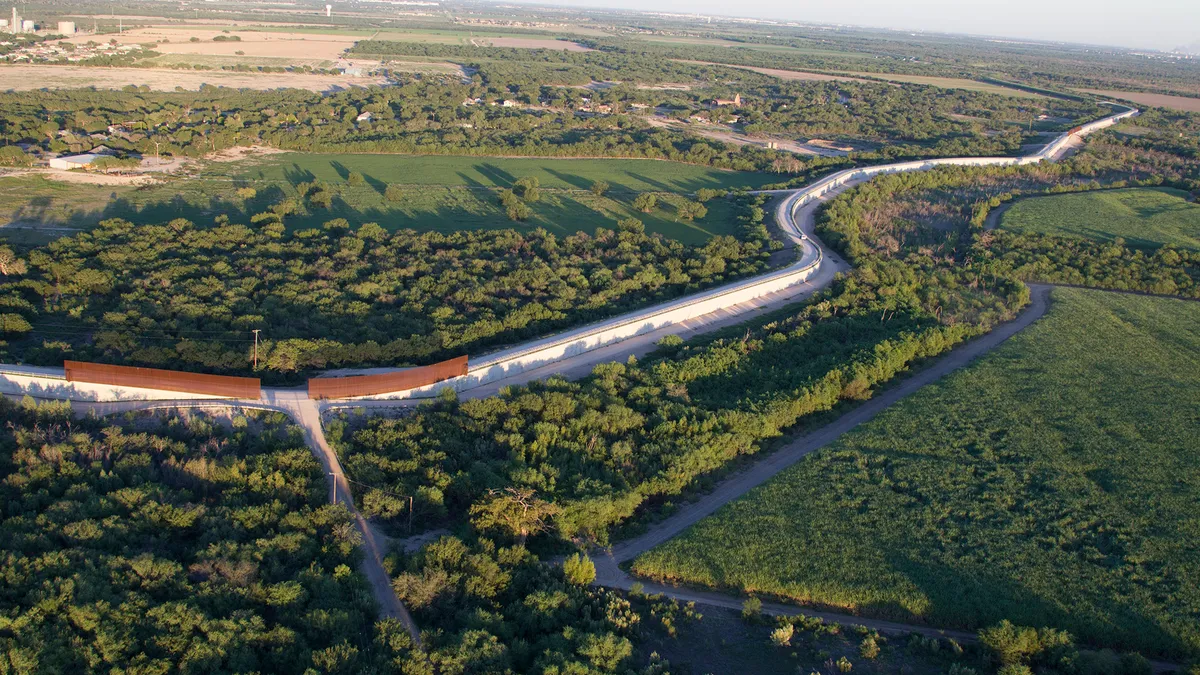To see how this announcement fits into the timeline of border wall construction, click here.
Dive Brief:
- U.S. Customs and Border Protection (CBP) and the Army Corps of Engineers have awarded Galveston, Texas-based SLSCO Ltd a $145 million contract to build a 6-mile piece of a border-levee wall system along the U.S.-Mexico border in the Rio Grande Valley of Texas.
- The company's contract calls for the construction and installation of "tactical infrastructure," which includes building a reinforced concrete levee wall to the height of the existing levee; installing 18-foot-tall steel bollards on top of the concrete wall; removing vegetation within the 150-foot enforcement zone along the path of the new levee wall; building an all-weather patrol road next to the wall and the installation of "detection technology," lighting and a video surveillance system.
- The Hidalgo County, Texas, project is within the control of CBP's McAllen Station, which includes 53 miles of border along the Rio Grande River. The agency said the area is one that sees a high level of illegal border crossings. Construction is set to begin in February 2019.
Dive Insight:
This marks the first new wall construction contract under President Donald Trump's Border Security and Immigration Enforcement Improvements executive order, which he issued back in January 2017, almost immediately after taking office. The directive, among other immigration-related items, calls for an end-to-end wall, but, up until now, work along the border has been limited to repairs and replacement.
Last month, the U.S. Department of Homeland Security published a notice in the Federal Register outlining its decision to waive environmental and other regulations for the Hidalgo County project, claiming that the compliance process would interfere with the wall's expedited schedule. The department, which has been able to fend off lawsuits by activists contesting the waivers, said it is still "committed to environmental stewardship" and will work to minimize any "impacts to the environment, wildlife and cultural and historic artifacts."
In June, SLSCO started work on a $147 million contract in San Diego to replace about 14 miles of 8- to 10-foot-high walls made of scrap metal with an 18- to 30-foot-high bollard-style wall system, which officials want topped off with an anti-climbing plate. The start of the wall replacement project is approximately one-half mile from the Pacific Ocean coastline and stretches east into San Diego County.
While border construction has created some opportunities for contractors, the positives could be outweighed by the fallout from public pushback, particularly on the part of officials around the country who have barred wall contractors — even bidders in some cases — from working with their agencies in the future. In Los Angeles, wall contractors are not locked out of city work but must disclose if they've worked on any Trump-era border projects.













